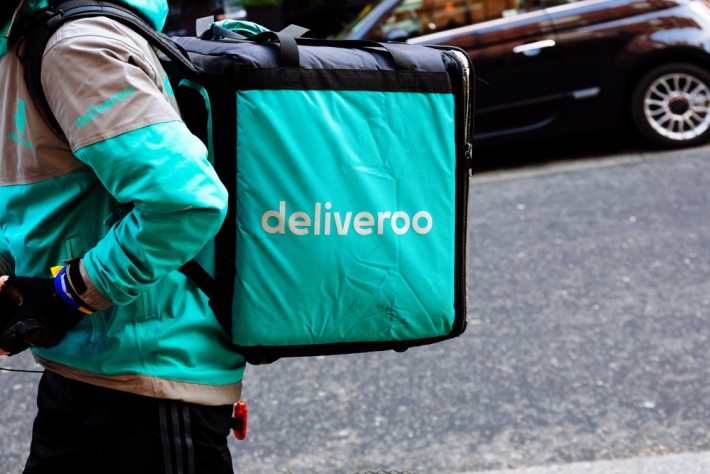Gig Economy Workers – What You Need To Know About Tax

The ‘gig economy’ is the term coined to describe the practice of companies hiring workers on a self-employed basis and usually paying them for each individual ‘gig’ that they do, rather than per hour. Companies such as Uber, Deliveroo and Hermes are well known examples of businesses that function within the gig economy.
In the UK the gig economy is soaring, with an estimated 5 million people, equivalent to 15% of the workforce, working within it. However there have been numerous issues and concerns around both the fairness of this system on the workers and the potential issues around lost governmental revenue from decreased employers national insurance contributions – and from inexperienced workers incorrectly navigating the self-employment system.
So if you work in the gig economy what do you need to know about being self-employed?
Register As Self-Employed
The first thing that you need to do is to register as self-employed with HMRC. However don’t worry if you have already started working, you can officially register anytime between starting your self-employed business and the 5 October in your second tax year. So if you starting working for Deliveroo on 1 January 2018 you would have until 5 October 2019 to register. However we would recommend registering as soon as possible as it will be much easier to keep on top of your record keeping.
To register as self-employed visit the HMRC website and register as a sole trader; simply follow the steps and provide the required information and then a few days later you will receive your Unique Tax Payer Reference (UTR) number. Keep this safe as you will need it whenever you contact HMRC or submit your tax returns. You can also register as self-employed by calling the HMRC Newly Self Employed Hotline on 0300 200 3504.
Keep Accurate Records
The most important thing to do is to keep on top of what you get paid and when – and remember that at some point you will need to pay tax on your income and that you will also need to pay national insurance contributions, so don’t spend it all at once. Keep all of your invoices and receipts - it can be a good idea to keep a spreadsheet or other record of these as you go along.
Even if you are paid in cash, you must still keep records of this, as HMRC can impose penalties on anyone found not be declaring all of their income. Also remember that you will need to keep your records for at least 5 years.
Calculate Your Expenses
Any expenses that you incur as a direct result of your work can be offset against any money that you are paid. However it is important to ensure that any expenses that you claim for can be proved to be ‘wholly, necessarily and exclusively’ incurred as a result of your work and are backed up by receipts. Examples of expenses could include accountants’ fees, business bank account’s fees, petrol costs for any journeys incurred directly as a result of your work and any other consumables that you have to pay for in order to do your job.
There are some expenses that you will only be able to claim partially for, if you also use these items in your personal life – e.g. smartphones that you use to receive and accept jobs but that are also your personal phone. In this case you must apportion a reasonable amount of those costs as expenses only – for example 15% business and 85% personal.
Submit An Annual Tax Return
You must complete and submit a tax return each year, for your earnings in the previous tax year. Tax years run from 6 April to the following 5 April, and you must submit your tax return by the following 31 January. So for any earnings that you make between 6 April 2017 and 5 April 2018, you must submit your tax return by 31 January 2019.
To complete your tax return you will need to log in to the HMRC Self-Assessment portal, using your UTR and must complete the required details including your total earning for the previous tax period, your expenses and any other relevant information. Once you have provided all of the necessary information, the amount of tax that you need to pay will be calculated.
Depending on your total earnings, you may also need to pay a portion of your next year’s tax bill upfront – known as a Payment on Account. This is usually in the form of 50% of your previous year’s calculation which is to be paid by 31 July in the current tax year. This has often been known to catch out people who are submitting their tax return for the first time.
To find out how much tax you can expect to pay (and therefore how much you will need to have ready for when you submit your tax return), HMRC have produced a useful online Self-Assessment Ready Reckoner tool.
How To Find Out More
The process of being self-employed and ensuring that you pay the correct amount of tax and national insurance can seem very confusing. To help you HMRC have produced a number of useful videos and webinars. However if you are still confused then we would recommend getting some professional advice. Many accountants will submit your tax return for you from as little as £100 – and don’t forget that many of their fees can be claimed as legitimate business expenses.
Handpicked Accountants only features accountancy firms who have been thoroughly vetted and so you know that you can trust to do a great job for a fair and reasonable price. Through our free service you can simply click to Find An Accountant in your area, or contact us and we will match you with your perfect accountant today.


